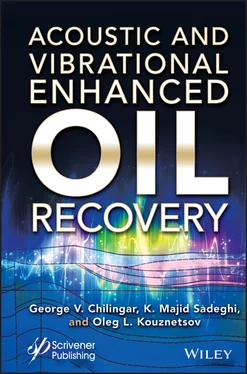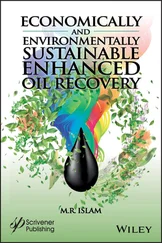Wiley Global Headquarters
111 River Street, Hoboken, NJ 07030, USA
For details of our global editorial offices, customer services, and more information about Wiley products visit us at www.wiley.com.
Limit of Liability/Disclaimer of Warranty
While the publisher and authors have used their best efforts in preparing this work, they make no representations or warranties with respect to the accuracy or completeness of the contents of this work and specifically disclaim all warranties, including without limitation any implied warranties of merchantability or fitness for a particular purpose. No warranty may be created or extended by sales representatives, written sales materials, or promotional statements for this work. The fact that an organization, website, or product is referred to in this work as a citation and/or potential source of further information does not mean that the publisher and authors endorse the information or services the organization, website, or product may provide or recommendations it may make. This work is sold with the understanding that the publisher is not engaged in rendering professional services. The advice and strategies contained herein may not be suitable for your situation. You should consult with a specialist where appropriate. Neither the publisher nor authors shall be liable for any loss of profit or any other commercial damages, including but not limited to special, incidental, consequential, or other damages. Further, readers should be aware that websites listed in this work may have changed or disappeared between when this work was written and when it is read.
Library of Congress Cataloging-in-Publication Data
ISBN 9781119760153
Cover image: Pixabay.Com
Cover design by Russell Richardson
Set in size of 11pt and Minion Pro by Manila Typesetting Company, Makati, Philippines
Printed in the USA
10 9 8 7 6 5 4 3 2 1
The authors are greatly indebted to Dr. Henry Chuang and Nina Chuang, for all of their tireless and generous help in accomplishing the completion of this book. Dr. Chuang was former student and teaching assistant in Petroleum Engineering at the University of Southern California through the guidance of Professor George V. Chilingar. The authors wish to thank them for everything and send them the very best wishes for their health and happiness.
List of Contributors
List of Major Contributors
Donald G. Hill
Valery P. Dyblenko
Rishard Ya. Sharifullin
E. Y. Marchukov
Ernst M. Simkin
I. A. Chirkin
Muhammad Haroun
M. L. Surguchev
Mehdi Shamsi
Michael Gorfunkel
Julia V. Korobeynikova
Nurzhan Igissinov
Rustem Akimov
Mark S. Chilingar
Physical fundamentals of vibration and acoustic actions on the reservoir for improving the oil yield and increasing the development tempo of depleted and water-encroached oil fields are presented in this book. It is shown that the area of most efficient application is reservoirs with crudes characterized by a high water content and heterogeneity, low permeability, high shaliness, etc. The developed techniques are ecologically neutral and do not cause damage to the well-designed elements. The book may be useful to students, scientists, and engineering-technical personnel engaged in geophysics and development of petroleum fields.
The book is devoted to the theoretical and applied aspects of physics of the porous media saturated with oil, gas, and (or) water. A special attention is devoted to the hydro- and thermodynamic phenomena emerging in such media upon spreading within them of elastic waves with frequencies between infrasound and ultrasound. For expert analysis of the reviewed phenomena, the authors expended years of painstaking work (creating theoretical models and conducting specialized physical experiments on the reservoir models in the in situ conditions). In the 1970s to 1990s, the authors designed a complicated special equipment for the laboratory and field experiments and then conducted experimental and industrial testing. Beginning in 1990s, the interest increased in the vibration and acoustic technologies to an increasing oil-gas production in Russia, USA, France, Brazil, and China. The authors believe that the results achieved will be useful first of all for specialists designing new methods of improving well productivity. A useful information, however, will be found here also by geophysicists creating new technologies of rock diagnostics and of seismic and acoustic identification of commercial hydrocarbon accumulations.
Having read the book, the reader will get the idea of major aspects in theory and practice of vibration and acoustic effect on the porous media. It is important that the reviewed technologies are nondamaging to the environment. The authors believe that the book will initiate a burst of interest not only in the hydraulics and flow physics in the field of vibration but also in the nonlinear geophysics. The most important is the synergetic physicochemical effects forming the foundation of seismo-geochemistry and the study of the Earth’s gas respiration in the process of its oscillatory motions.
Research presented in this book was initiated partly because of the recorded dependence of the rate of oil production on earthquake occurrences in seismically active areas (Surguchev et al. , 1975 [33]). It was noticed that several days after the occurrence of an earthquake with the epicenter located in the vicinity of the oil-producing oil field, the rate of oil production increased and remained higher than the pre-earthquake level for a considerable period of time. It was also noticed in the soil remediation studies (e.g., Sadeghi et al. , 1992 [28]) that sonic energy applied to the contaminated soil increases the rate of hydrocarbon removal and decreases the percentage of residual hydrocarbons. Modern world oil and gas-producing industry is dominated by the application of artificial methods of affecting oil reservoirs. The application of diverse action systems and methods enabled an implementation of the intensive oil fields’ development at high oil production tempo. The major accrual in the oil reserves in the future is anticipated in the areas of ever more complex geologic and geographic environment, significantly distant from the areas of oil consumption.
Thus, developing novel efficient enhanced oil recovery technology [e.g., Electrical Enhanced Oil Recovery (EEOR)] is imperative. At present, after a field development is ended, more than half of oil reserves remain subsurface. This means that, currently, the fields with residual oil reserves of over 0.5 BT (billion tons) are written off annually. If such amount of the oil loss is maintained, then a stable increase of oil production cannot be guaranteed for an extended period of time due to limited oil reserves.
The following major reasons may be identified for a decreased oil yield:
– The operation of capillary forces preventing oil displacement from smaller pores of a micro-nonuniform porous medium;
– Unfavorable interrelation between the mobilities of the displaced and displacing liquids;
– Geological heterogeneity of the productive reservoir.
Almost 90% of oil in Russia, for example, is recovered from the fields which experienced poor sweep efficiency during the waterflooding.
Another important trend is development of the techniques improving interrelation of the mobilities between the oil and water. For the application of one or another action method on the oil and gas reservoirs, it is important to know where exactly the oil is remaining after flooding. Due to a low sweep efficiency by water, the non-recovered oil in the flooding process, will constitute 60% to 90% of the entire reserve. About 10% to 40% of the oil is not recovered due to a low sweep efficiency by waterflooding.
Читать дальше












